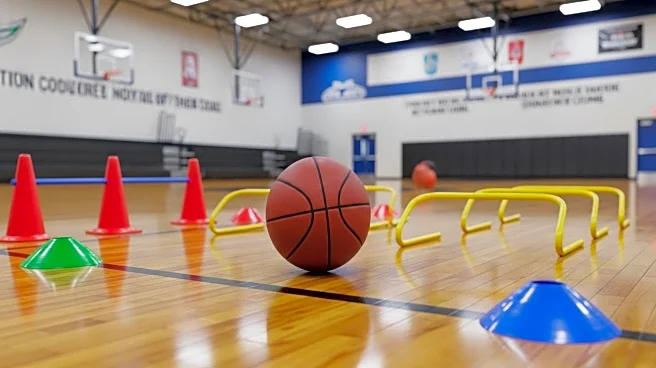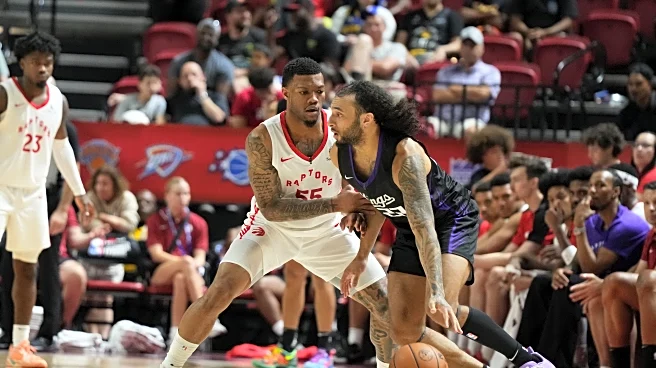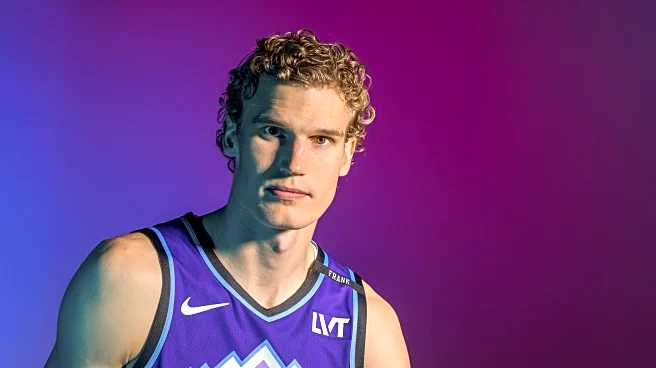What's Happening?
The Toronto Raptors are employing a unique strategy to regain their competitive edge in the NBA without resorting to a full roster teardown. This approach involves a combination of targeted trades, internal player development through their G League affiliate, Raptors 905, and selective veteran acquisitions. The Raptors aim to maintain competitiveness while developing young talent, avoiding the prolonged losing seasons often associated with traditional rebuilds. This strategy contrasts with the methods used by teams like the Oklahoma City Thunder, who have focused on accumulating draft assets through extensive roster overhauls.
Why It's Important?
The Raptors' strategy is significant as it offers an alternative model for mid-market NBA teams seeking to remain competitive without sacrificing long-term potential. By focusing on player development and maintaining a competitive culture, the Raptors hope to avoid the pitfalls of extended losing streaks and fan disengagement. This approach could serve as a blueprint for other teams looking to balance immediate competitiveness with future growth. The success of this strategy depends heavily on effective scouting, player development, and strategic asset management.
What's Next?
The Raptors will continue to monitor the development of their young players and the recovery of injured prospects like Ulrich Chomche. The team's management, led by GM Bobby Webster, will need to make strategic decisions regarding potential trades and player acquisitions to enhance the roster without compromising future flexibility. The upcoming offseason and next season will be critical in determining whether the Raptors' hybrid approach can sustain competitiveness and potentially inspire similar strategies across the league.
Beyond the Headlines
The Raptors' approach highlights the importance of a strong development pipeline and the role of G League affiliates in nurturing talent. By using Raptors 905 as a development engine, the team can provide young players with valuable experience and coaching, which is crucial for their growth. This method also underscores the need for patience and long-term planning in sports management, as the success of such a strategy relies on the gradual maturation of prospects and the ability to make calculated roster moves.











